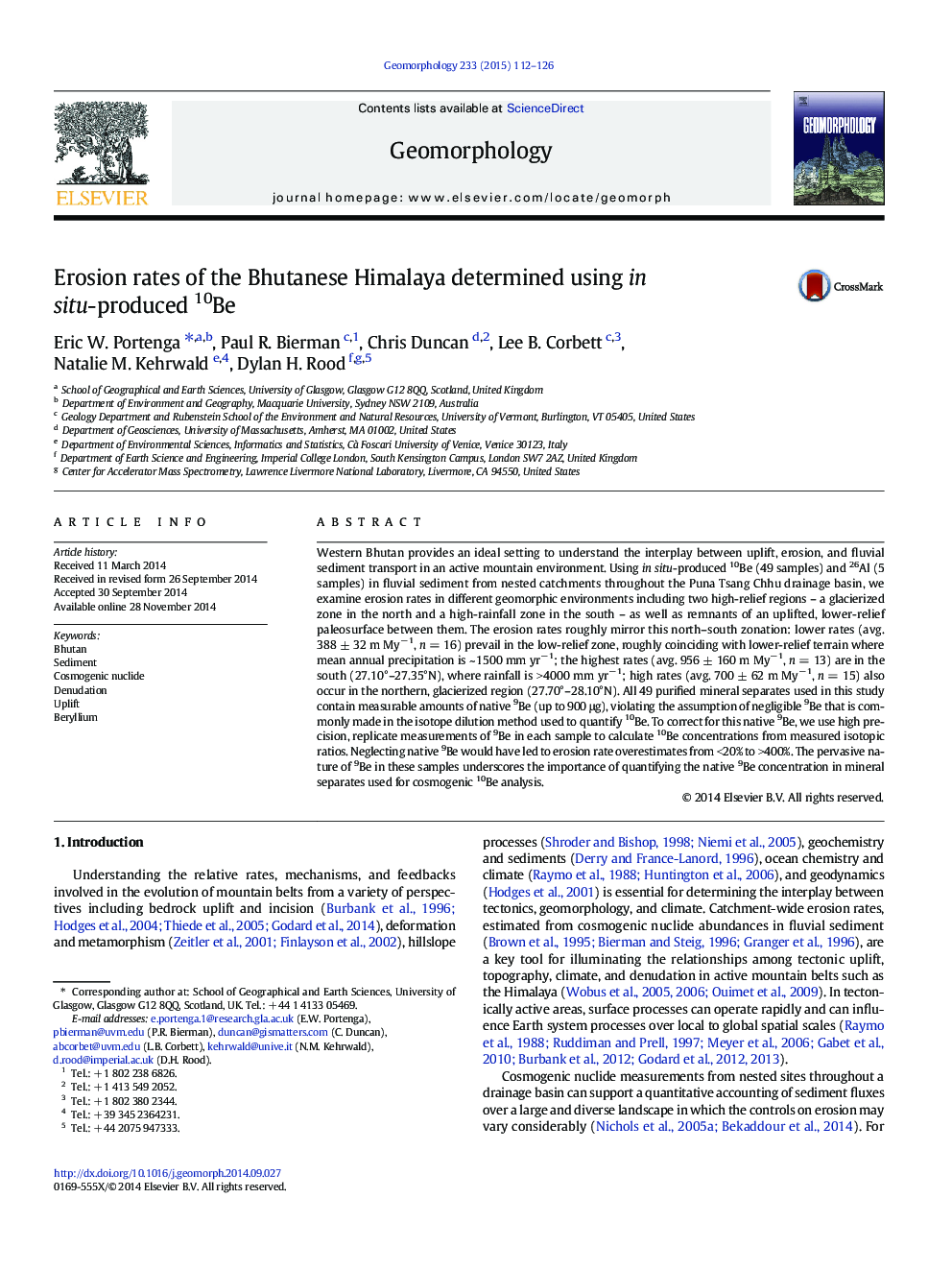| کد مقاله | کد نشریه | سال انتشار | مقاله انگلیسی | نسخه تمام متن |
|---|---|---|---|---|
| 4684227 | 1635416 | 2015 | 15 صفحه PDF | دانلود رایگان |

• Fluvial sediment samples provide basin-wide erosion rates across western Bhutan.
• Erosion is rapid in northern glacierized basins and southern high-rainfall basins.
• Erosion is slow in basins within a centralized low-relief paleosurface.
• Native 9Be was found (often significantly) and corrected for in each sample.
• Erosion rates in western Bhutan are similar to other studies across the Himalayas.
Western Bhutan provides an ideal setting to understand the interplay between uplift, erosion, and fluvial sediment transport in an active mountain environment. Using in situ-produced 10Be (49 samples) and 26Al (5 samples) in fluvial sediment from nested catchments throughout the Puna Tsang Chhu drainage basin, we examine erosion rates in different geomorphic environments including two high-relief regions – a glacierized zone in the north and a high-rainfall zone in the south – as well as remnants of an uplifted, lower-relief paleosurface between them. The erosion rates roughly mirror this north–south zonation: lower rates (avg. 388 ± 32 m My− 1, n = 16) prevail in the low-relief zone, roughly coinciding with lower-relief terrain where mean annual precipitation is ~ 1500 mm yr− 1; the highest rates (avg. 956 ± 160 m My− 1, n = 13) are in the south (27.10°–27.35°N), where rainfall is > 4000 mm yr− 1; high rates (avg. 700 ± 62 m My− 1, n = 15) also occur in the northern, glacierized region (27.70°–28.10°N). All 49 purified mineral separates used in this study contain measurable amounts of native 9Be (up to 900 μg), violating the assumption of negligible 9Be that is commonly made in the isotope dilution method used to quantify 10Be. To correct for this native 9Be, we use high precision, replicate measurements of 9Be in each sample to calculate 10Be concentrations from measured isotopic ratios. Neglecting native 9Be would have led to erosion rate overestimates from <20% to >400%. The pervasive nature of 9Be in these samples underscores the importance of quantifying the native 9Be concentration in mineral separates used for cosmogenic 10Be analysis.
Journal: Geomorphology - Volume 233, 15 March 2015, Pages 112–126